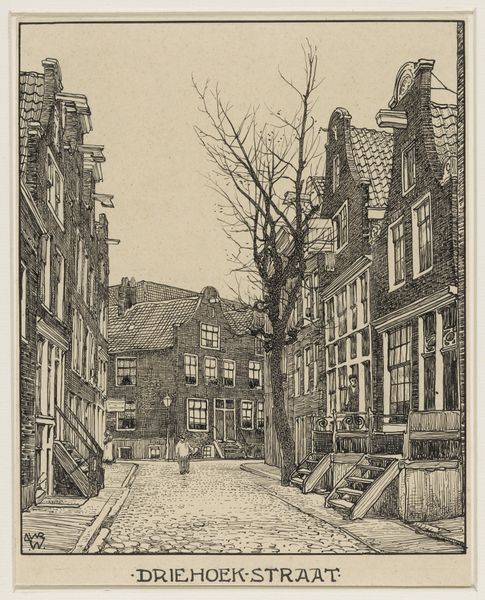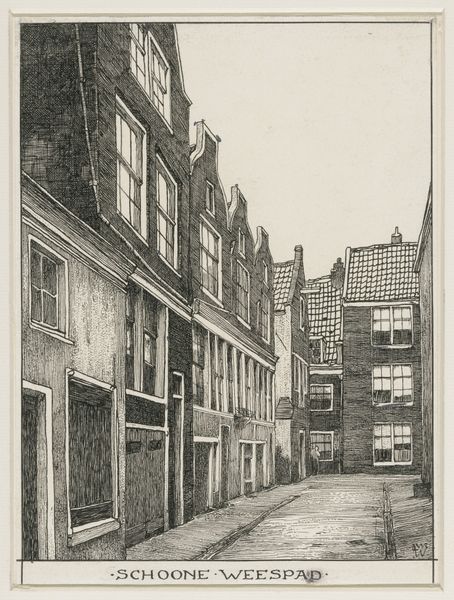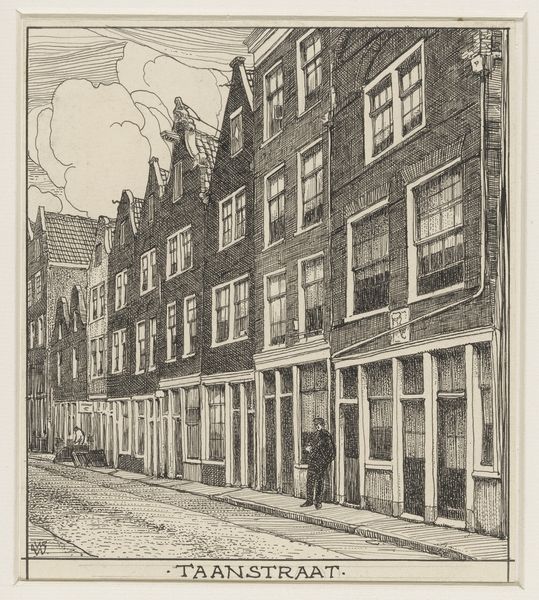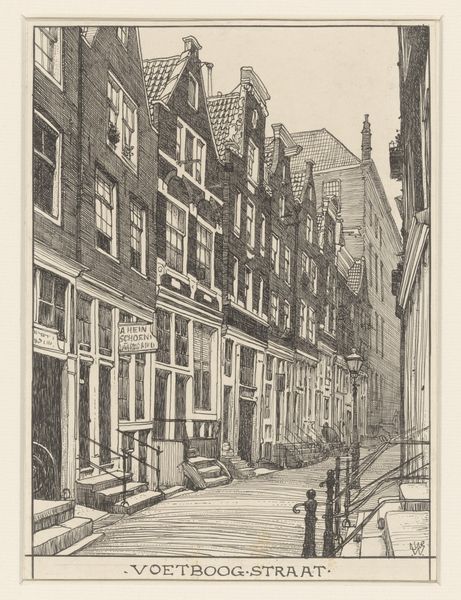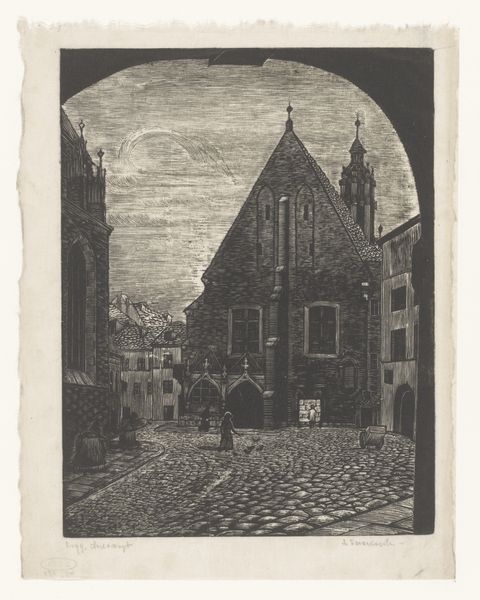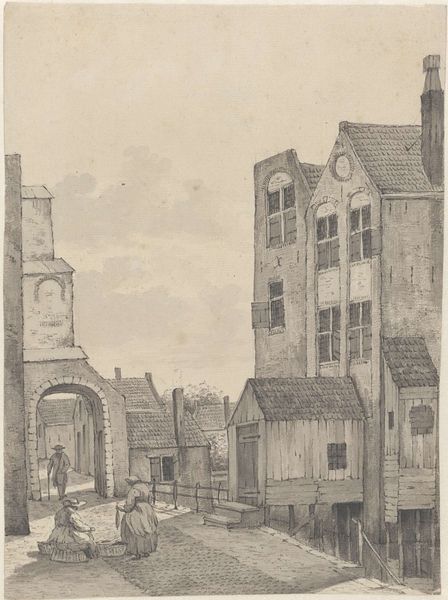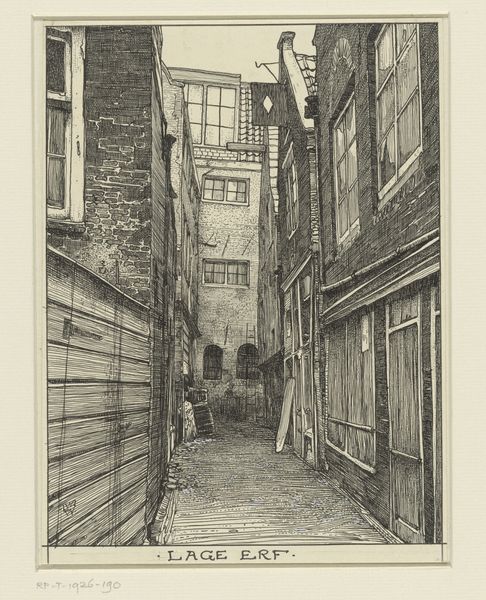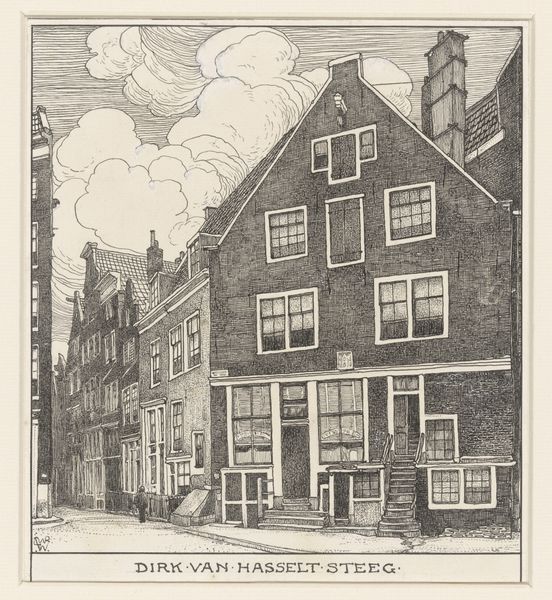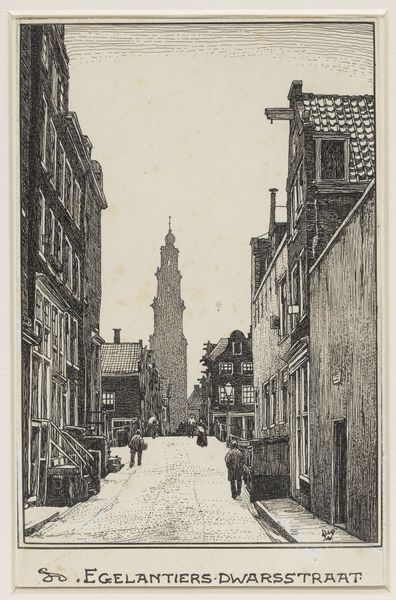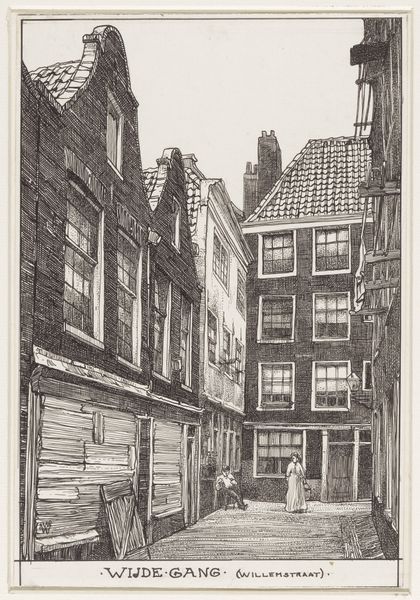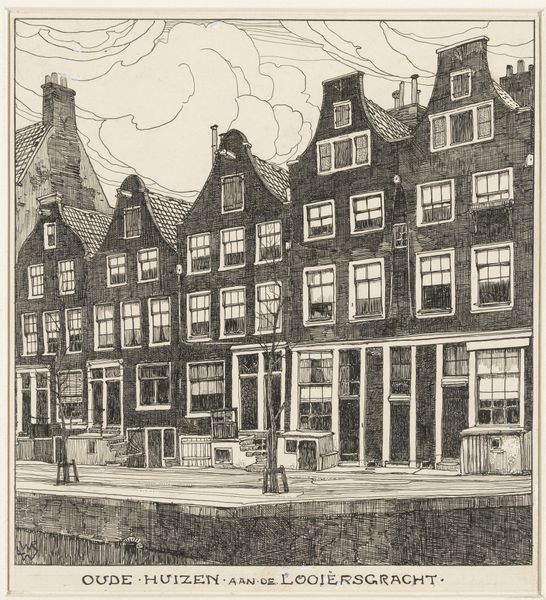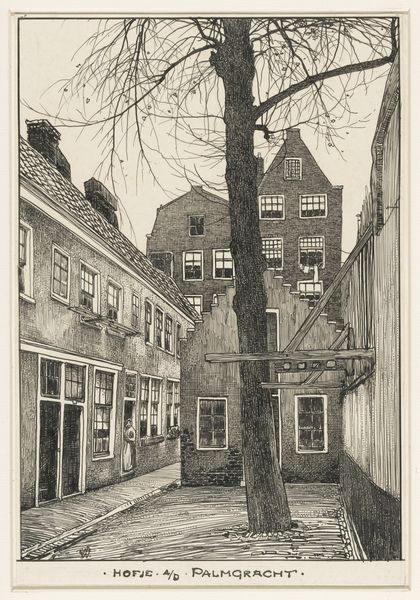
drawing, paper, ink
#
drawing
#
figuration
#
paper
#
ink
#
line
#
cityscape
#
street
#
realism
Dimensions: height 198 mm, width 123 mm
Copyright: Rijks Museum: Open Domain
Editor: Here we have "De Maagdelievenstraat te Amsterdam" by Willem Wenckebach, created sometime between 1870 and 1926. It’s a drawing in ink on paper, depicting a street scene. It’s so detailed, and yet something about the figures seems almost ghostlike, anonymous. What strikes you most about it? Curator: The emptiness in the figures absolutely captures the way marginalized populations can feel invisible in urban spaces even in the midst of a bustling environment. The narrow streets themselves, drawn with such precision, seem to reinforce a feeling of enclosure, of being boxed in. Considering when this was created, during a time of rapid industrialization and urbanization, what can this tell us about the people in the drawing? Editor: That’s interesting. I hadn’t considered the impact of urban development on the street’s inhabitants, especially its poorer denizens. Are you suggesting that the sketch actually reveals unspoken class issues? Curator: Exactly. This wasn't just an innocent street scene. What narratives were intentionally being excluded by the artwork’s aesthetic realism, and why? The focus on line and architectural precision almost feels like an attempt to sanitize or control the narrative, while the indistinct figures suggest that the street would remain indifferent. Wenckebach is speaking to an experience shared across gender and ethnic identities. It shows the everyday individual experience of a global process. Editor: I see what you mean. Now I'm seeing those absences. All that detail, and yet the people are vague… like background noise almost. Curator: Yes! Editor: That really changed how I see this piece. I was just thinking about it as a simple city sketch! Thanks for your insight. Curator: My pleasure. Art history has more to offer us when we view it through a social lens.
Comments
No comments
Be the first to comment and join the conversation on the ultimate creative platform.

